Intr0
During the Shadow Floriade, Zone2Source will participate in Our Living Soil’s international programme. The two-year art-science project is supported by the World Congress of Soil Science that will take place this year between 31 July and 5 August in Glasgow. The aim of the congress and Our Living Soil is “to inspire a deeper public understanding of the importance of soils.”
From July 10 to September 18 the group exhibition Our Living Soil at Zone2Source presents artists who, in different ways, are concerned with soil and land. During this period, the artists will gradually develop new projects for the programme, some building on their residency last year at the World Soil Museum in Wageningen. Kate Foster, who lives in both the Netherlands and Scotland, will physically attend the Congress of World Soil Science and shape her artistic responses and observations into ongoing work for the exhibition.
About
In our capitalist society, soil is seen as one of the many natural resources that can be used. But soil is much more than that; it is something alive and nourishing. Furthermore, healthy soil is essential for all life on earth, including our human life. We need a rediscovery with new stories to understand and experience our relationship to soil. While science takes a narrow, specialist view of soil research, art plays a vital role in representing and shaping new practices and portraying the many diverse cultural relationships people can have with soil. By asking different questions, artists can establish connections from a different perspective in which we evidently experience entanglement – the coexistence of people and soil.
Our Living Soil is a research project into cultural meanings, representations and values of the soil in a time of planetary change. People are intimately connected with the earth, but modern man generally has little understanding of the meaning of soil in our lives. Around the globe, soils are increasingly threatened by various procedures. Examples of these threats are intensive soil management and monocultures, and short-termism. All resulting in compaction, pollution, erosion and salinisation, loss of fertility, organic matter and biodiversity. The health of our soils is rarely brought up to the public compared to the health of our air, rivers and oceans, climate disruption and the conservation of endangered species.
However, soil health, climate change, food production, biodiversity and water supply are all inextricably linked. The latest State of Nature report suggests that poor agricultural management appears to significantly impact nature. Recently, it has been found that peatland is one of the most essential soils for CO2 storage in the fight against global warming. And so, the historical abuse of peatlands in the Netherlands and Scotland has been recognised in large-scale peatland restoration.
For the exhibition Our Living Soil, we have invited artists who are doing research on the soil in all kinds of ways. We investigate the role of artists in landscape research, how they do research and what forms of publicity they develop to make the meaning of ecosystems tangible and shed new light on them. Artists conducting fieldwork in landscapes, often in transdisciplinary teams, have developed as a genre of artistic practice. During Our Living Soil, we will reflect on the meaning of art as fieldwork together with the artists and the audience through debate, workshops and expeditions: how do we present work that deals with a landscape in the art space, what forms of publicity can we develop that maintain the connection with the location and the process of research? Our Living Soil consists of an exhibition with projects inside and outside the pavilion and an extensive public programme of debates, workshops and expeditions.
Artists
De Onkruidenier
Miek Zwamborn & Rutger Emmelkamp
Debra Solomon
Jacqueline Heerema
masharu
Jasper Coppes & Esmee Geerken
Kate Foster
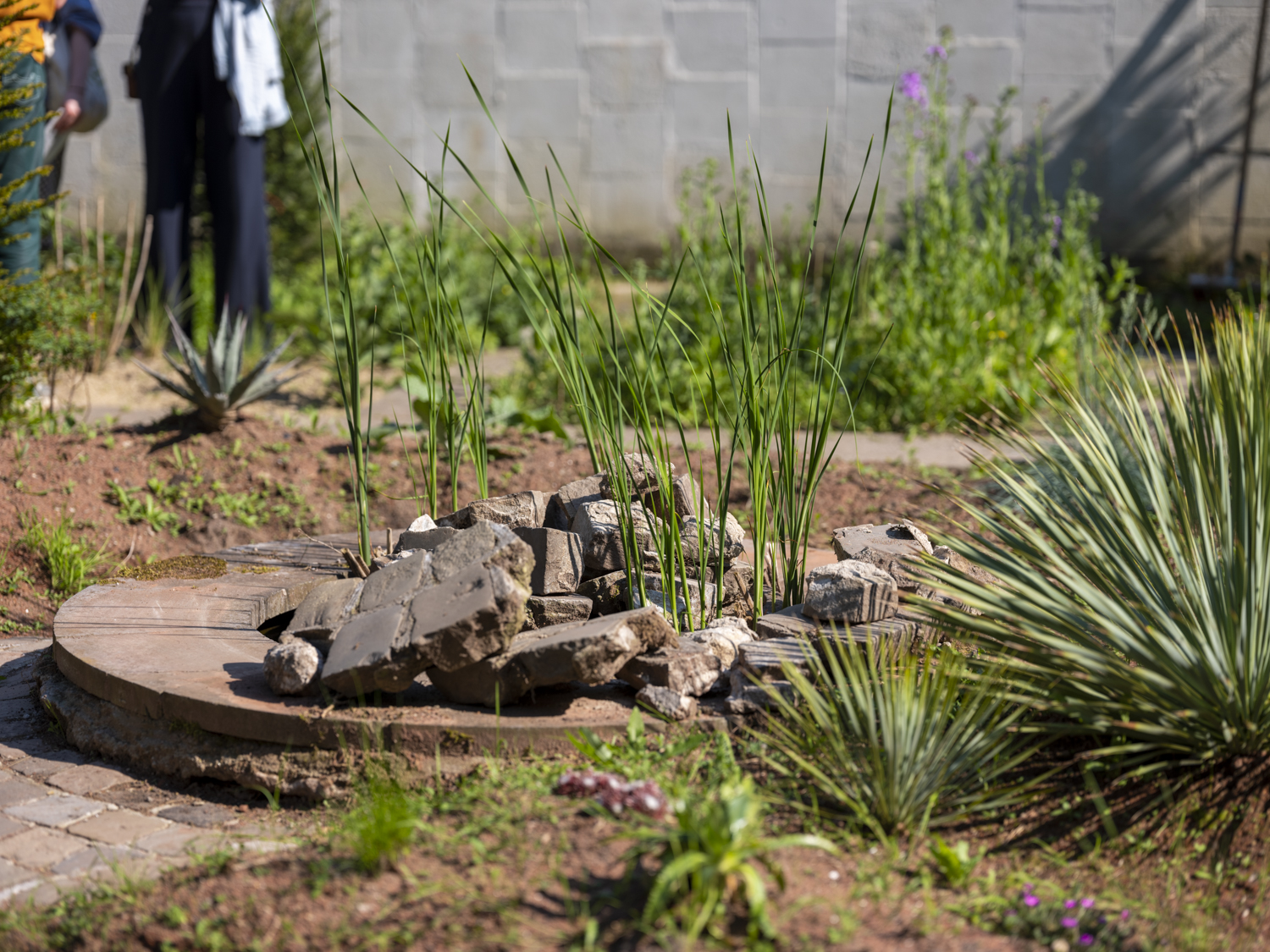
De Onkruidenier developed the ShaduwTuin (Shadow Garden) in the walled monastery garden of the Belgian pavilion in the Amstelpark for a two-year public programme on gardening and new nature-culture stories. The SchaduwTuin is part of Our Living Soil‘s unique programme on soil and gardening. The SchaduwTuin is a long-term cooperation between Zone2Source and the artist collective de Onkruidenier (consisting of Ronald Boer, Jonmar van Vlijmen and Rosanne van Wijk).
The artistic practice of the Onkruidenier takes shape in fieldwork around gardening and cultural stories about plants, for which we are developing an artist’s garden in the Amstelpark. For this project, the municipality of Amsterdam has provided the artists with the walled Belgian monastery garden under the Vrije Ruimte regulation which gives vacant spaces to pioneers who fulfill a particular social need in Amsterdam. This garden was closed for years. With the resuscitation of the Kloostertuin, De Onkruidenier wonders how the concept of gardening can be transformed into a form in which we as humans adapt to processes in our urban nature. What other relationships and relationships with our living environment do we learn to discover?
De Onkruidenier works with volunteers and participants on a garden in which new cultural stories about relationships between people and plants are developed around an extensive public programme of workshops and expeditions. The central question is: can a park be a communal garden where people can reshape their relationship with nature. During the sessions in the Shadow Garden, people will work together with the artists in the Belgian monastery garden, where we can really put our hands on the earth. And to simultaneously investigate a speculative taxonomy based on relational classifications, leading to other practices dealing with nature.
rutger emmelkamp & Miek Zwamborn
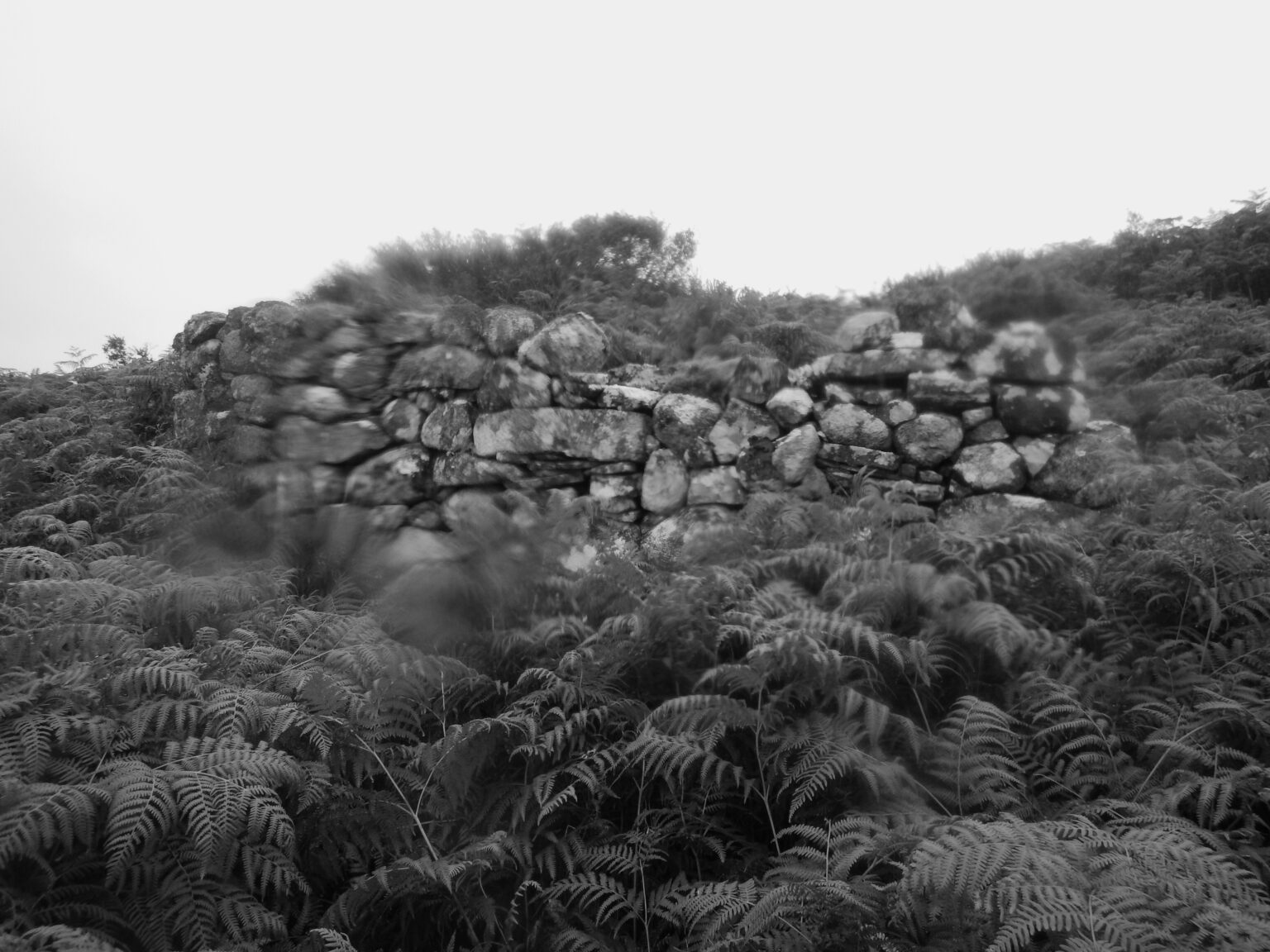 How can the landscape, seen through different eyes and mapped in a polyphonic and sensory way, provide new insights, generate stories and offer possibilities for a more sustainable relationship between man and his environment?
How can the landscape, seen through different eyes and mapped in a polyphonic and sensory way, provide new insights, generate stories and offer possibilities for a more sustainable relationship between man and his environment?
For Our Living Soil, Rutger Emmelkamp and Miek Zwamborn are developing the installation Lied voor Hazelaar en Berk / Song for Hazel and Birch, in which they focus on the northern flank of Torr Fada, a densely wooded slope with remnants of the now rare Celtic rainforest and ruins of one of the many villages on the Scottish end of Mull.
Poor soil provided the originally Scottish Gaelic-speaking population with a breeding ground from which a rich culture could develop. This culture, which dates back far before the Bronze Age, has been deliberately destroyed since ±1750 and has largely disappeared (Highland Clearances). The same applies to flora and fauna. The resulting cultural silence and impoverished landscape are drowned out by ocean roaring, bleating sheep and growing tourism. Ubiquitous ruins, traces of former fields and patches of primaeval forest still give an impression of the richness and bustle of yesteryear.
The traumatic void calls for a cautious approach. It raises questions about how newcomers to the island might relate to the complex issues in this installation – which is part of a long-term, collective research project (KNOCKvologan) – Rutger Emmelkamp and Miek Zwamborn attempt to draw attention to this landscape full of contradictions. Behind Lied voor Hazelaar en Berk lies the idea that humus, peat, sand, clay and rock are culture-generating substances and that the local soil composition can help fill the resulting void.
debra solomon
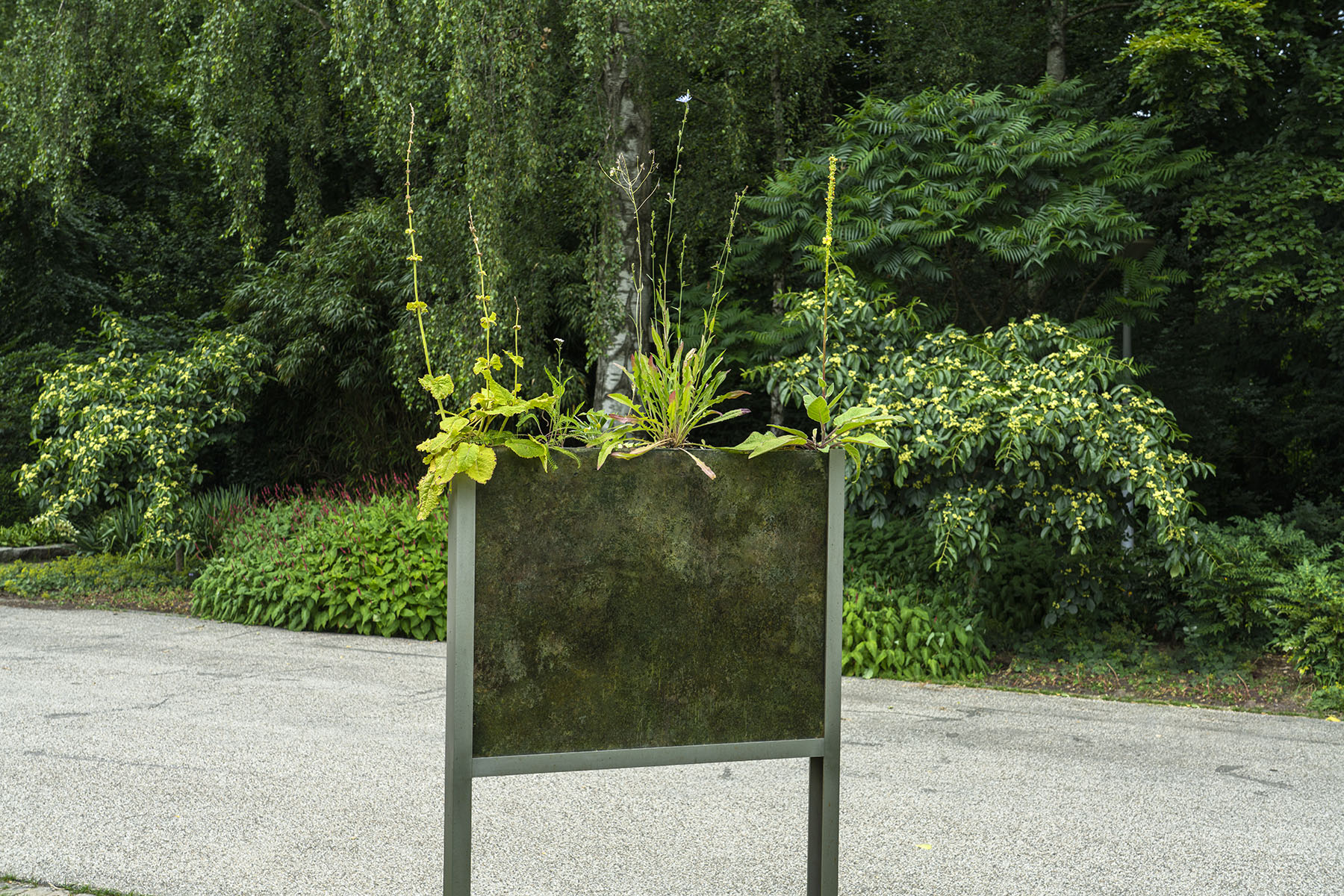
Debra Solomon is a permaculture expert advocating for systemic change to rethink relationships between humans, soil, other organisms, city and food, etc. She invented the concept of MultiSpecies Urbanism in her project for the Venice Architecture Biennale. Debra previously developed her project Entropical in collaboration with Jaromil Rojo at Zone2Source. She participated in launching our School of MultiSpecies Knowledges last year with her workshop Radical Observation. A series of ‘rhizotrons’ she presented in Venice, together with video works, will be shown for the first time in the Netherlands during Our Living Soil.
Rhizotrons contain living soil and plants that allow people to experience the ‘rhizosphere’ – the root zone of an urban soil environment, especially that of the Amsterdam region Southeast and North, where Urbaniahoeve is developing a food forest and a demo garden, respectively. A rhizotron is at once a laboratory, an architectural design, and a technical tool used to observe the part of the earth that is most rich in life beneath our feet – the rhizosphere. In the back space of the Glass House, we show several videos made by Debra Solomon about the importance of our relationship with the earth.
The Voedselbos (Food Forest) Amsterdam Zuidoost (also known as VBAZO) is an ecological zone of 55 hectares in the southeast of Amsterdam. Since 2018, more than 70 people have become the VBAZO Community of Praxis. They are working with the municipality to transform the area. As a community of praxis, they design and add food forest layers to the earlier planted urban greenery. They maintain contacts and cooperate with different municipal departments. This video describes the network of relationships needed to replace Amsterdam’s standard green maintenance regime with one supporting the food forest’s more-than-human nature. Photographs of the changing landscape of Amsterdam Zuidoost and the mature food forest ecosystem of Solomon and Urbaniahoeve paint a picture of the city as an ever-evolving urban food forest.
jacqueline heerema
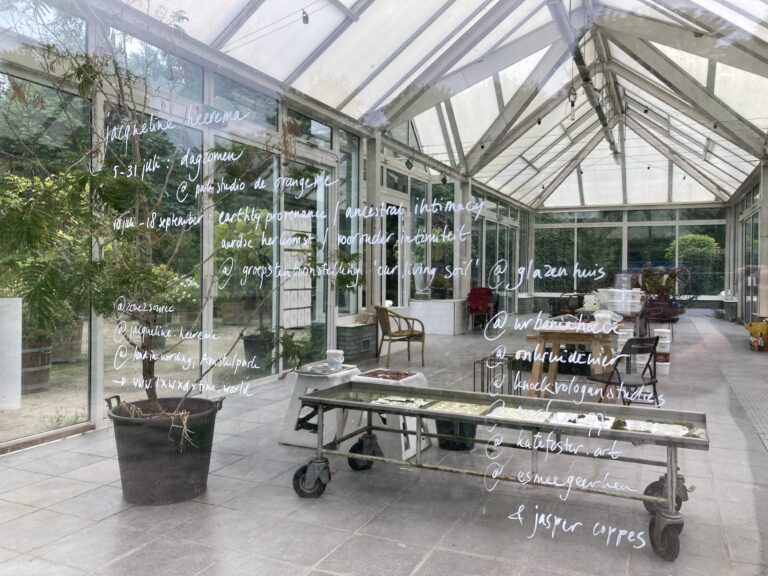
Moerasmiddagen is a participatory public programme with sensory research about experiencing the vulnerability of the soil. Jacqueline Heerema will make a radio play (podcast) about sensuality and climate in co-creation with the public and the soil. The Park Studio will be an experimental sensory test space for encounters between people and the soil, which lives, breathes, grows and shrinks. Through various workshops with experts, such as expeditions to Land in the Making and a soil drilling in Almere, all senses are activated to discover what is usually not visible or tangible. The discovery of something as natural as the ground beneath our feet is the goal of this sensory research. Jacqueline is also developing a radio play (podcast). It will become part of the visitor’s experience in the open air and during Land in wording. In addition, the radio play will also be available in the Amstelpark after Our Living Soil.
To investigate perceptions of time and locality, Jacqueline will carry out a second public groundbreaking in Almere. Fifty years after the Floriade in the Amstelpark, the Floriade 2022 will take place in Almere. During this soil drilling, she registers the auditory response of the soil. Also, she collects the underground climate archive with which she continues to work on the necessity of sharing climate narratives, which will also be included in the exhibition. Her contribution thus consists of art in the Glazen Huis, a podcast at Land In Wording and a public research programme in the Orangerie.
masharu
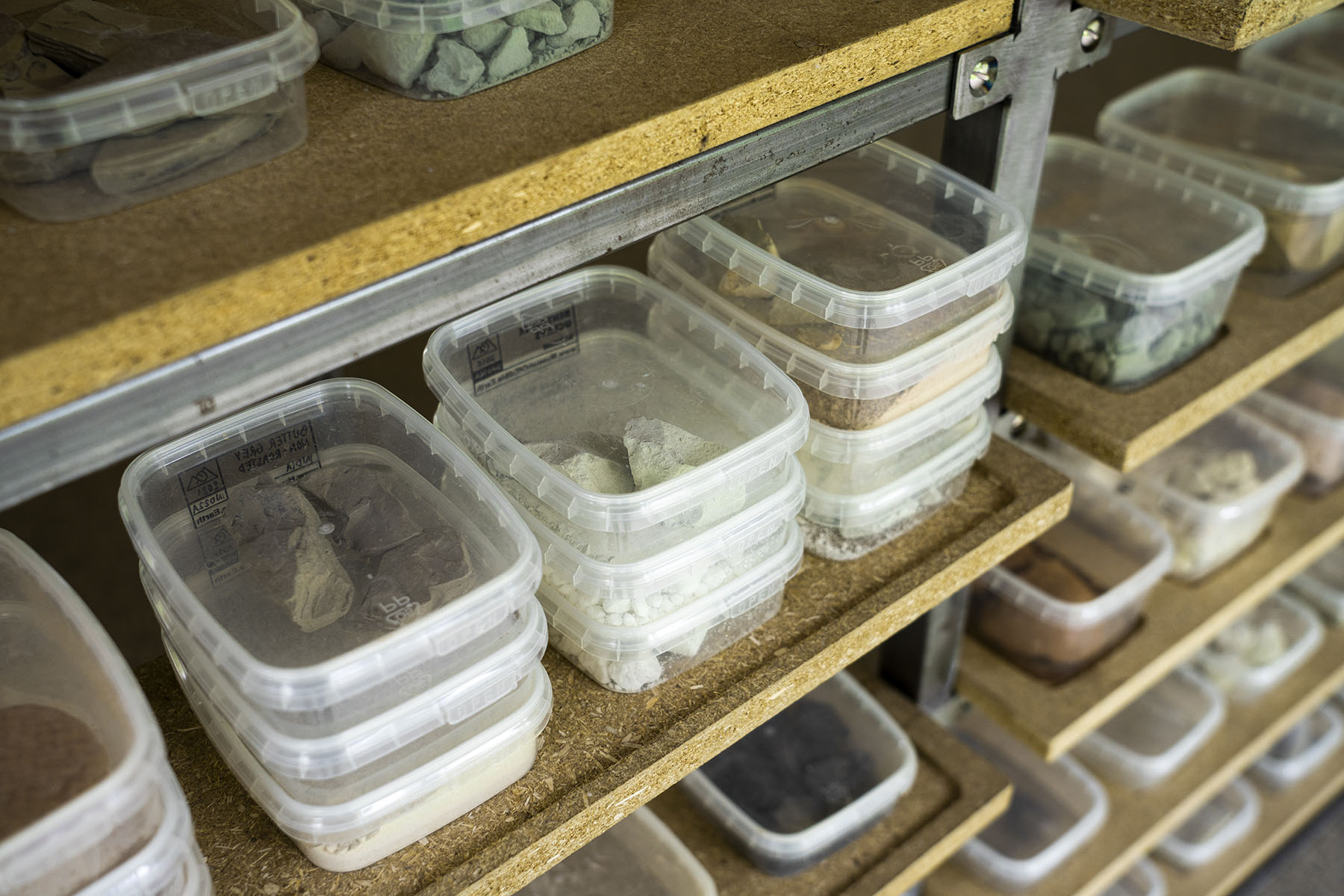
masharu collects soil and researches cultural traditions of eating soil worldwide. Geophagy is the practice of eating soil, which people have known for thousands of years. In Africa, South America and Asia, eating soil is still a cultural, spiritual or medicinal custom. In November and December 2021, masharu did a residency at the World Soil Museum Wageningen. For Our Living Soil, masharu develops a new version of The Museum of Edible Earth that maps cultural practices of peoples around the world around eating soil.
“masharu’s work takes a whole new stance on the subject of ‘soil’. While we gather soils for scientific purposes, looking closely at the soil’s composition, there are totally different ways to engage with the substance. masharu, for instance, collects soils and investigates how edible they are. This approach is inspirational, tantalising, as it presents a different perception on soil. The cultural aspects of soil are fascinating, although little is known about them.” Stephan Mantel (director World Soil Museum)
The Museum of Edible Earth invites the public to review knowledge about food and cultural traditions using creative and sensory approaches. The Museum of Edible Earth focuses on the following questions: What ideas and values are behind the practice of eating earth? Where do the histories of eating soil come from? What are the possible benefits and dangers of eating soil? How do the material properties in soil affect taste? The Museum of Edible Earth develops a comprehensive collection of soil used for oral consumption in various parts of the world from different cultural practices and histories. The workshops that are part of The Museum of Edible Earth, in which the audience gets to taste soil itself, contribute to rethinking the value of our relationship with soil.
So far, more than 400 soil types from 34 different countries have been collected via the Internet and during excursions to form the basis for The Museum of Edible Earth. The collection includes soil samples from Belarus, Cameroon, China, Congo, Ivory Coast, Cuba, Ecuador, France, Germany, Ghana, Guatemala, Haiti, India, Indonesia, Iran, Iraq, Kazakhstan, Kyrgyzstan, Latvia, Lithuania, Mexico, Morocco, Netherlands, Nigeria, Pakistan, Russia, Slovenia, South Africa, Suriname, Ukraine, UK, USA, Uzbekistan, Zimbabwe. It links collecting, documenting, artistic presentation and storytelling practices with scientific approaches to the analysis of the collection. The museum activates dialogue around environmental issues and aims to develop greater awareness of our relationship with the earth by inviting diverse communities to share their knowledge and experience of soil and add new knowledge to the collection.
The Museum of Edible Earth – with its emphasis on landscapes and cultural traditions from all over the world – is given a special context in the Floriade park, which as an international horticultural exhibition, brought contributions from all over the world to the Amstelpark, where a great diversity of flora can still be seen. For Our Living Soil, masharu developes a new phase. While previously, many soil classifications were used and on the Museum of Edible Earth website, it is possible to classify samples in the country of origin, shape, composition and colour. Still, the most critical component was missing: taste. So, as for the next phase, masharu will experiment with an interactive work called Taste of Earth for Our Living Soil. The work uses a standard methodology of wine tasting as a departure point for collecting experiences and impressions. This also involves developing a more nuanced language around taste. masharu will collaborate with a programmer to design an interactive soil tasting as a way to collect feelings and emotions from the audience and link these to the collection of the Museum of Edible Earth. This will be connected to a digital tasting map displayed on a touch screen in the exhibition to which visitors can add their own taste impressions. The work, therefore, asks for participation and will constantly evolve.
Around the Museum of Edible Earth, masharu organises public events, from soil tastings to a lecture in which they invites the public to reconsider our knowledge of soil, food and cultural traditions by addressing the question of how geophagical practices can change the way we interact with the earth. For example, a connection is made to the local place, and masharu will work with the audience in the Amstelpark, where participants collect, taste and describe soil. The samples from the Amstelpark will be added to the Museum of Edible Soil, and the developed language and methods to the Taste of Earth digital archive.
Jasper Coppes & esmee geerken
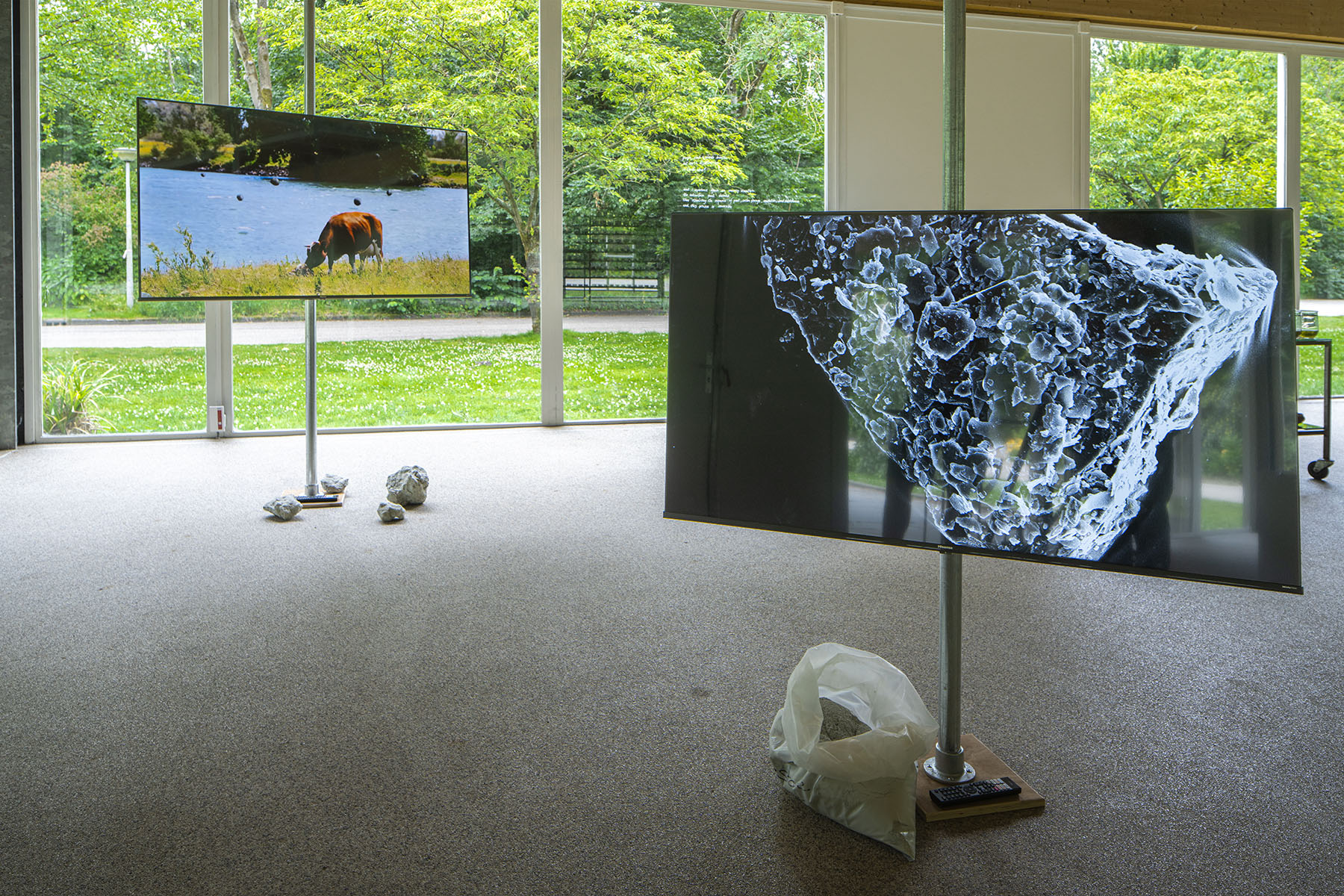
In their project Shadow Soil, Jasper Coppes and Esmee Geerken focus on the recent debate surrounding contaminated soils. We hear about PFAS (per- and polyfluoroalkyl substances) almost every week. These man-made non-degradable Teflon particles have penetrated our living environment’s deepest regions. We are advised not to let our children play on building sites because they are full of lead. Animals graze in the river area have dioxins in their bodies because the river brings them in from factories along the water. During the development of ‘new nature’ in a lake along the Maas, ultra-fine rock powder was discharged from Amsterdam ports. This was allowed after it was classified as ‘soil’ by the government, despite harmful advice from ecologists.
There is no getting around it: our landscape is full of pollution, no matter how picturesque or wild it may be. Yet it remains difficult to achieve social awareness of this pollution simply because we cannot see the pollutants. With their video installation Shadow Soil, Coppes and Geerken want to make these invisible contaminants visible and thus contribute to a broader debate on our dealings with ‘ground’ substances. At AMOLF, the institute for complex materials, where Geerken is a guest researcher, they made scans of the discharged stone powder with an electron microscope. In doing so, they found mysterious spheres covered with nanoparticles of rock powder. Do these spheres belong in the ground or not? Coppes and Geerken let them float through the landscape like strange objects. How do the nanoparticles move within the ecosystem of the lake? Two transparent sedimentation tubes show how slowly the stone powder settles compared to the sand that initially lay in the plan along the Maas.
Shadow Soil is an intermediate stage of the more extended film project that Coppes is working on this year, in which the same scans of the toxins will be used. The film will be completed in the autumn of 2022, thus after Our Living Soil. It will be screened in an Amsterdam cinema in cooperation with Zone2Source.
kate foster
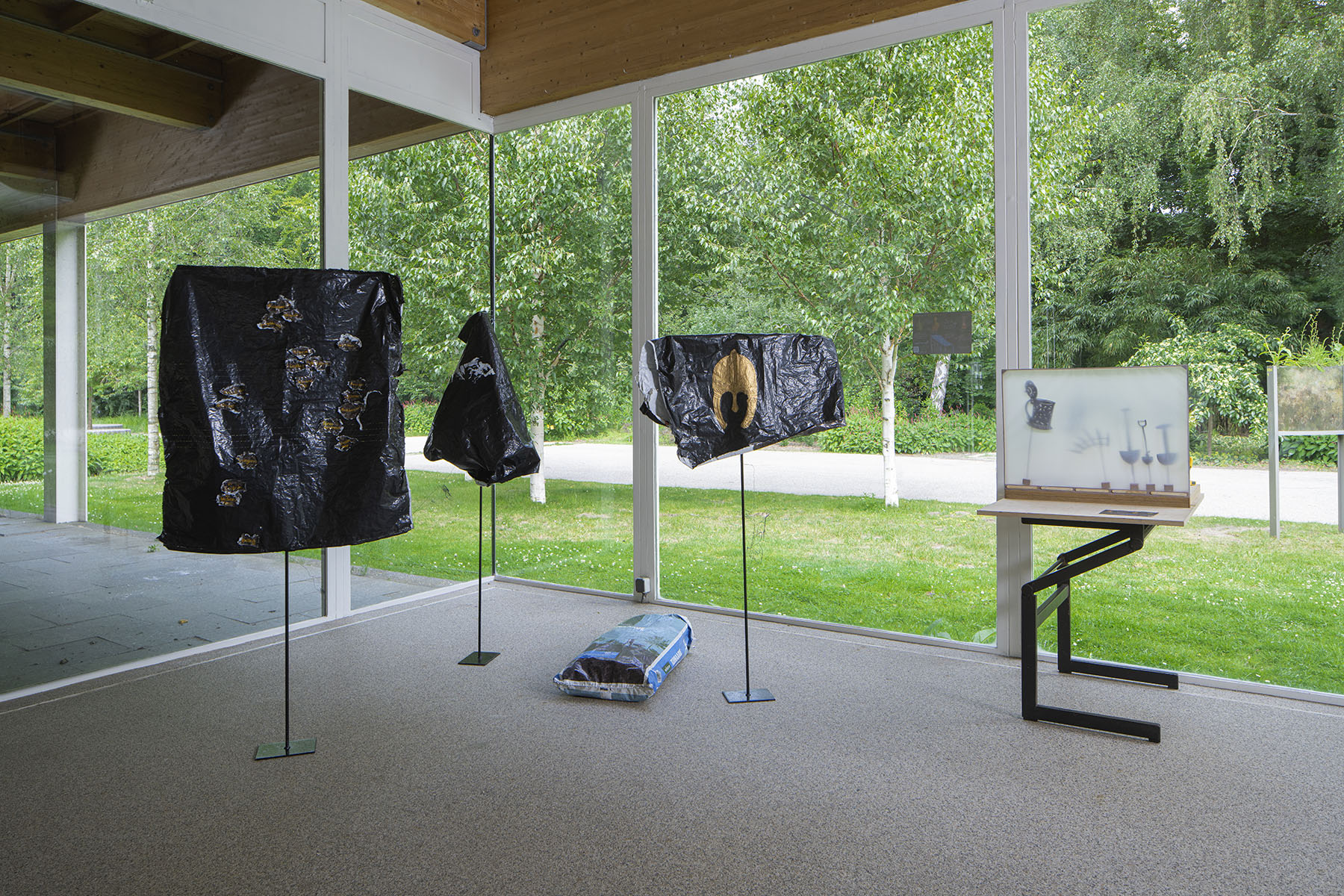
Kate Foster is a Scottish artist who did a residency at the World Soil Museum in Wageningen in the run-up to Our Living Soil. In her work, she has developed an ecological artistic practice to embed her practice and research in peatland restoration projects. For example, in February 2022, she organised a series of Peat Exchanges at the World Soil Museum, conversations in which a specific type of peatland is the subject of her artistic response to it. For Our Living Soil, she is developing an installation and public project in which peatlands in the low and high countries are connected.
Since 2016 Kate Foster has been working on a long-term project on peatlands, collaborating with environmental projects as a creative practitioner and working outside of the traditional art space. During 2022, she is resident in the World Soil Museum in Wageningen, aiming to stimulate dialogue about the values of wetlands. Kate’s work continues to connect Dutch and Scottish peatland themes at the World Soil Congress in Glasgow and the Scottish peatland restoration project Peatland Connections. In collaboration they will produce a creative documentation of the Congress to extend and widen the conversations beyond the event itself. This reiteration of the congress will be available online, as will ongoing drawings from the World Soil Museum collections and Wageningen University’s research. Her drawings and installations presented here act as props for dialogue narrating relations of people to peatlands.
Peatland Figures, a portable exhibit using found materials, consists of drawings that create shadows. Each drawing symbolises a different human connection to peatlands: the figures articulate activities that have played a part in creating today’s landscapes. Packaged Peat reflects on how much peat has disappeared from the Dutch landscape – but reappears as an imported horticultural product.
Reiteration of the World Soil Congress
At the World Soil Congress in Glasgow in August, Kate will join socioecological artist Kerry Morrison and soil scientist Anna Basley who work to restore peatlands and peatland connections at the Crichton Carbon Centre in Galloway, Scotland. They will reflect on the scientific themes they encounter and start the process of widening the conversations by documenting Congress proceedings using sketchbooks, diagrams, texts and conversation. Afterwards, Kate will continue to develop these themes working in the World Soil Museum collections.
in and around het Glazen Huis
Orangerie
Belgische Kloostertuin